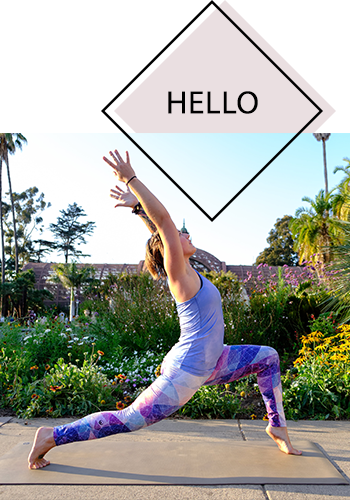Yoga is the Art of Listening
/When you’re new to yoga, there’s a lot of information to absorb every time you take a class.
You’re deciphering not only the words of the teacher, but also your own experience of them— and perhaps a layer of self-judgment over top of that.
For example:
The teacher asks you to step into a lunge position, creating a deep stretch in your hip flexor and a sensation of slight discomfort. Wow, you think. OK. I’m really tight in this area of my body. I wonder if it’s because I’ve been sitting too much. Should I be sitting so much?
Then when the teacher then asks you to lift your arms overhead, you experience a wobble in your balance.
Your attention is back on the pose (focusing on the present).
Ah, this is hard! you think, glancing around the room to see if anyone else noticed your reaction. You feel a little embarrassed and you also adjust your stance slightly based on what the teacher is saying now about the alignment of the posture. “Right foot out to the right a bit more,” the teacher instructs, “and put pressure down through your big toe to stabilize your balance. Keep your eyes on one point to help focus your mind.”
You take a deep breath and finally settle a bit in the pose. Your body feels steady again but there are still thoughts bouncing around in your head.
That was so awkward, you think, shaking your head slightly. I wonder if I’ll ever feel like I’m good at this?
In a moment like this, there are layers of experience happening all at once:
The physical layer of sensation, breath, stretching, muscular engagement, and visual sight
The mental layer of interpreting new information and acting on it, making small adjustments, processing, understanding, wondering why a pose or movement feels a certain way, pushing back against the teacher’s words vs. your own experience
The emotional layer of feeling shifts as they come and go; in this case, judging the state of your own body, perhaps reflecting on its worth; feeling embarrassment or even self-loathing, feeling judgment from others or self-judgment
It’s a lot to take in!
I think the more often you practice, the smoother this process becomes. Slowly over time you are able to create more separation between what is happening in a pose and how you feel about it internally.
You judge it less.
Instead of saying, this is good or this is bad, you simply notice what it feels like to be in the pose.
You notice the quality of the breath.
You begin taking more ownership for your own practice and caring less what others in the room are doing or what they might be thinking.
As the poses become more familiar, there are less thoughts about how to set up each pose— you shortcut the experience from hearing the teacher’s instruction to then moving into your inner experience of the pose. There’s less: Is my knee in the right place? Am I remembering to breathe? What’s coming next in this sequence? And there’s more: I’m safe to be here right now. I can feel my chest opening and my hip flexor opening. I’m breathing. I’m listening to what my body is telling me— my body is saying, do less in this pose, back off a little bit.
Neither of these experiences is right or wrong, good or bad. They’re just two different experiences.
One of the best parts about a long-term yoga practice, I think, is that your awareness shifts over time. You notice different things.
The more you practice, the more you pick up on subtle cues— from the teacher’s words, from physical sensations, from intuitive sense and your own inner wisdom.
It takes time and it takes practice to listen carefully.
Be kind to yourself in the process.












